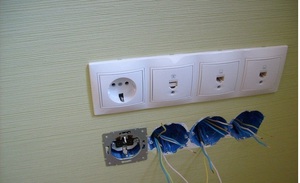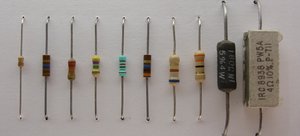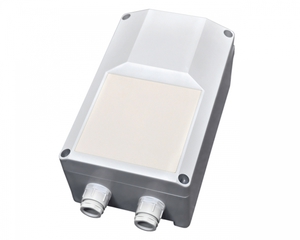Marking of SMD resistors: general information, principles of notation, decryption of data
Resistors… How much is important in this word for those, who is fond of electronics or constantly works with it. However, for complete immersion in the world of electronics, it is necessary to know at least superficially and be able to determine the labeling of chip resistors.
General data of SMD chips
The abbreviation "SMD" stands for Surface Mounted Devices, which translated into Russian means "device, surface mounted ". And this is true - resistors are mounted above the surface on special mounts. These devices are mounted on printed circuit boards.
One of the significant advantages of smd chips is their small size. Dozens can be easily placed on one PCB (if not hundreds) similar products. Also due to the high quality and low cost, resistors have become extremely popular in the electronics market.
Thanks to constant progress, new models of resistor chips are appearing, markings and characteristics of which are constantly changing. In total, this market has 3 types of products:
- Made in the Soviet period (now significantly losing popularity).
- Modern models.
- SMD resistors.
In this article we will dwell on the labeling of the last type of t. To. he is the most interesting.
Principles of labeling
All SMD chips are marked differently. The point is, that each product has its own size and tolerance value. In accordance, to avoid confusion, manufacturers decided to allocate 3 main groups for labeling:
- Ware, denoted by 3 digits.
- Models, which have in marking 4 figures.
- Devices with 2 digits and one letter.
Each of these types should be considered in more detail.
The first group includes products (the numbers 103, 513 etc) with admission to 2%, 5% or 10%. Under the first two digits of the mantissa, and the latter indicates the degree 10. The last value is needed to calculate the value of the resistor (measured in Omaha). Also in some models there is a letter "R", which indicates a decimal point.
It was decided to include models in the second group, which have a standard size of 0805 and above, and also have a tolerance 1%. The principle is similar to the first group of resistors: the first 3 the numbers indicate the mantissa, and the fourth is the value of the degree, has a basis 10. in addition, here as well, as in the previous type, the last number implies the face value of the model (in Omaha), and the letter R denotes a decimal point. It is worth remembering, devices with standard size 0402 not marked.
Finally, in the last group there are smd chips, which have a standard size 0603 and tolerance level in 1%. The numbers indicate the code in the EIA-96 table (about it below), and the letter is the value of the multiplier:
- A - number 10 at zero degree
- B - base 10 with a degree 1
- C is a number 10 to the extent 2
- D = 103
- E = 104
- F = 105
- R = 10-1
- S = 10-2
Decoding of marking
For installation or operation with SMD resistor, you need to know and be able to decipher numbers and letters. This process can be divided into 2 type.
The usual transcript
As mentioned above, in the manufacture of smd resistors, inviolable labeling rules apply. They are invented for that, so that the buyer can easily determine the mantissa and the value of resistance. That's why, what you need is a sheet of paper with a pen or a mathematical mind.
Let's start with a simple example - determining the resistance of products with tolerance to 2%, 5% or 10% (these are the models, in which in the labeling 3 figures). Let's say, the number is indicated on the resistor 233. This means, what is needed 23 multiply by 10 in the third degree. In the end it will work out, that the product resistance 23 KOhm (23 x 103 = 23 000 Ohm = 23 KOhm).
The situation is similar in the models, having 4 figures in the description. Let's say, the number is indicated on the product 5401. Performing similar calculations we obtain resistance 5,4 KOhm (540 x 101 = 5 400 Ohm = 5,4 KOhm).
The situation is completely different with the interpretation of the designation of products, on which numbers and letters are specified. As written above, this will require an EIA-96 table (it can be easily found on the Internet). Substituting the numbers in the appropriate line and translate the letter into a numerical expression, you can easily calculate the resistance. Example, marking 04D means, that the resistance is equal to 10,7 KOhm (107 x 103 = 107 000 Ohm = 10,7 KOhm).
Decryption through services
Progress does not stand still. Modern technologies are constantly being introduced, new approaches are being developed, in other words, human life is becoming more comfortable. In today's world even for calculating the resistance of SMD chips, there are good services and programs.
You can easily find many sites on the Internet, on which it is possible to calculate the resistance. In most cases, such a service is a calculator to calculate the resistance of the resistor. Here are just a few of them:
- cxem.net/calc/calc.php
- wpcalc.com/markirovka-smd-rezistorov
- profi-radio.ru/online-raschyot-soprotivleniya-smd-rezistora-po-tsifrovoy-markirovke.html
Also, the domestic program "Resistor" was developed especially for these purposes.. It allows you to find out all the information about the product in a couple of clicks. in addition, this software is absolutely free.
And finally
Deciphering the symbols of SMD resistors is a very specific process. However, for full-fledged work with chips, it's just necessary. in addition, the knowledge gained will definitely not be superfluous.
Quite a lot of people prefer to do calculations the old way - with a pen, notepad. Others use special software. But in any case it is necessary to train only a little - and to calculate resistance of resistors will not be difficult.



